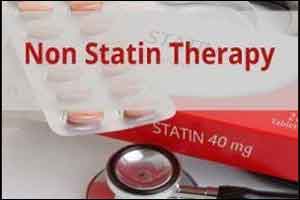- Home
- Editorial
- News
- Practice Guidelines
- Anesthesiology Guidelines
- Cancer Guidelines
- Cardiac Sciences Guidelines
- Critical Care Guidelines
- Dentistry Guidelines
- Dermatology Guidelines
- Diabetes and Endo Guidelines
- Diagnostics Guidelines
- ENT Guidelines
- Featured Practice Guidelines
- Gastroenterology Guidelines
- Geriatrics Guidelines
- Medicine Guidelines
- Nephrology Guidelines
- Neurosciences Guidelines
- Obs and Gynae Guidelines
- Ophthalmology Guidelines
- Orthopaedics Guidelines
- Paediatrics Guidelines
- Psychiatry Guidelines
- Pulmonology Guidelines
- Radiology Guidelines
- Surgery Guidelines
- Urology Guidelines
When to add another drug to statin

Determining when to add nonstatin therapy. A quantitative approach
Despite optimal statin therapy, patients may remain at increased risk of atherosclerotic cardiovascular disease (ASCVD) and may benefit from the addition of nonstatin therapies, namely ezetimibe and proprotein convertase subtilisin/ kexin type 9 (PCSK9) monoclonal antibodies. However, costs and uncertainty about the benefits of nonstatin therapies limit their use. Robinson and colleagues performed systematic reviews of subgroup analyses from randomized controlled trials (RCTs) with statin-treated participants to identify the lower limit of absolute risk for various patient groups and identify those patients who might benefit from the addition of ezetimibe or a PCSK9 inhibitor.
The investigators identified 6RCTs that reported ASCVD event rates for subgroups. From these papers, they estimated 10-year absolute risk of ASCVD and then identified high-risk and very high-risk patients. The relative risk reductions for the addition of a nonstatin to lower low-density lipoprotein (LDL-C) were used to determine the number needed to treat( NNT) to prevent 1 ASCVD event over 5 year for each patient group and to allow comparisons with 5-year cost analyses.
The 10- year risk for patients with clinical ASCVD plus comorbidities( deemed very high risk) was at least 30% despite moderate-or-high-intensity statin treatment. Ten-year risk was between 20% and 29% (high risk) despite statin treatment for those with ASCVD without comorbidities (but possibly with history of revascularization) or who have heterozygous familial hypercholesterolemia.
Adding ezetimibe to reduce LDL-C by an average of 20% would provide a 5-year NNT ≤50 for very high-risk patients with LDC-C ≥190 mg/dl. The NNT would drop of ≤30 for very high-risk patients with LDC-C≥160mg/dl despite statin treatment.
Adding a PCSK9 inhibitor to power LDL-C by at least 50% would provide an NNT ≤50 for very high-risk and high-risk patients with LDC-C ≥70 mg/dl, and an NNT ≤30 for very high-risk and high-risk patients with an LDC-C ≥130 mg/dl.
Summary
The investigators concluded that the benefit and risk of adding ezetimibe or PCSK9 inhibitors to patients optimally treated with statins who remain at high or very-high-risk of ischemic cardiovascular events can be estimated on the basis of the patients's risk, the on-treatment LDL-C level, and the additional relative reduction in risk on the basis of the percent reduction in LDL-C. Further trials are needed to prospectively validate the effect of drug-specific treatment algorithms.
Reference
Robinson JG, Huijgen R, Ray K, et al: Determining when to aa nonstatin therapy. A quantitative approach. J Am Coll Cardiol. 2016;68:2412-21.

Disclaimer: This site is primarily intended for healthcare professionals. Any content/information on this website does not replace the advice of medical and/or health professionals and should not be construed as medical/diagnostic advice/endorsement or prescription. Use of this site is subject to our terms of use, privacy policy, advertisement policy. © 2020 Minerva Medical Treatment Pvt Ltd